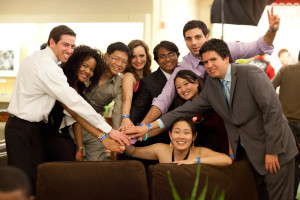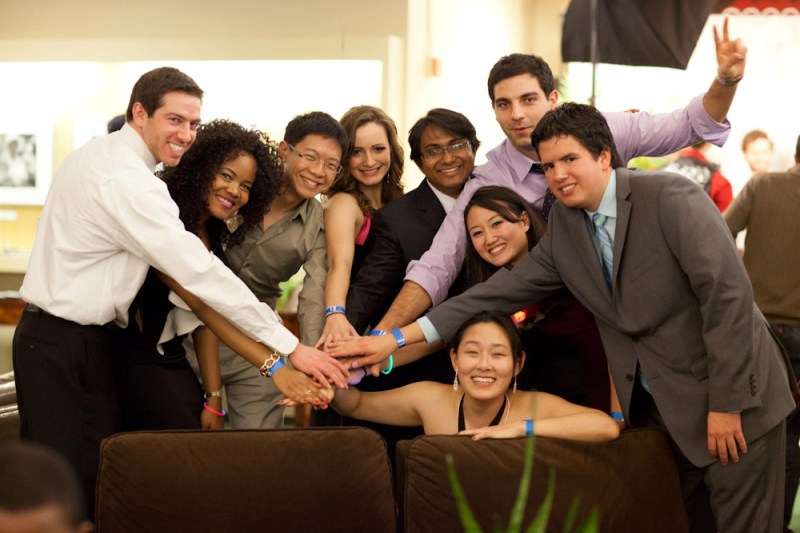In 2008, a final year Ph.D. student in the electrical engineering department committed suicide.
Motivated by the loss of her friend and feeling a gap in the support given to graduate students in the department, Chinyere Ifeọma Nwabugwu M.S. ‘10 Ph.D.’14 established the Graduate Students in Electrical Engineering (GSEE) in May 2011 along with six other founding members to foster community among students, faculty and administration.
“[We wanted to] create a student support network to help students navigate the electrical engineering graduate program and primarily focus on students helping students,” said Nwabugwu. “I think we can [be] helping each other to be successful together.”
Stanford University’s graduate student community outnumbers its undergraduate population, with nearly 9,000 students in 90 departments and programs across seven schools. The electrical engineering department has the largest graduate student population—895 students in 2012—accounting for 10 percent of total graduate enrollment, according to Patricia Gumport, vice provost for graduate education.
Despite their predominant presence on campus, graduate students and administrators say there are more difficulties for these students than undergraduates when it comes to connecting with the Stanford community, citing factors such as arriving at Stanford at different times and starting their graduate careers at different stages of life.
Nwabugwu and her peers in the electrical engineering department have taken action to fill in the community gaps.
HappEE graduates
GSEE started organizing events long before it officially became a student organization in January 2012.
Its first event was HappEE Hour in September 2011, which has now expanded to become a biweekly event offered throughout the year.
In order to increase faculty participation, the group launched GSEE Afternoon Tea on Wednesdays and student-faculty lunches, which offer students a chance to meet faculty in a more intimate setting, Nwabugwu said.

Faculty, staff and administrators, along with 200 students, also attended EEPROM, which was held on the last day of the electrical engineering qualifying examinations last year.
“My wife and I went last year—it was great,” said Brad Osgood, GSEE’s faculty advisor and senior associate dean for student affairs in the School of Engineering.
Other events that GSEE holds include mixers with other graduate programs, a pumpkin carving contest, movie nights and DiscoverEE, an event for prospective students to help the department with recruiting admits. This quarter the group created its first intramurals team with more than 80 participants.
“We want to send a message to other departments…[that] they can build both a support network for the graduate students in their departments and for the students [outside of their departments],” Nwabugwu said. “It is very near to my heart to be able to do this—to be able to pursue excellence while fostering community.”
While GSEE encourages bonding on the departmental level, the Graduate Student Council (GSC) focuses on interdepartmental bonding.
“We’re trying to do one [graduate student event] at least every quarter,” said Trevor Martin Ph.D. ’15, co-chair of the GSC.
The graduate student Welcome Back Party and Grad Formal are examples of the GSC’s community events. The council also funds student groups that graduate students are involved in, as long their events are open for everyone.
Administrative action
University administration plays its own part to ensure community bonding among graduate students, especially after the Student Mental Health and Well-Being Task Force published a report in 2008 about the campus climate on mental health issues based on research conducted from Fall 2006 through Winter 2008.
“At Stanford, some graduate students spoke movingly of the stress of isolation and about the need for friends,” the report stated. “They are concerned about not having friends and not being able to make them.”
“[According to the 2008 report,] students don’t feel connected to campus at large or between each other,” said Ken Hsu, director of the Graduate Life Office.
Hsu named two challenges: First, that graduate students are very diverse and arrive at Stanford at different times, and therefore lack the mutual starting experience that undergraduates have; and second, that the graduate student’s life is mostly a “worn-out path” from home and the department.
“Graduate students commute directly from home to their department,” Hsu said. “That’s why you don’t see many graduates on campus. The [graduate student’s] lifestyle does not lend itself to meeting other people from other focus of different programs.”
As a consequence of the 2008 report, the Graduate Life Office launched three main projects: improvement of the Community Associates program (equivalent to the undergraduate Residential Assistants program), New Graduate Student Orientation (NGSO) and the Graduate Student Programming Board (GSPB) which holds events that all students can participate, connecting off-campus students to the Stanford community.
From the academic perspective, Gumport said the office of the Vice Provost for Graduate Education (VPGE) makes the effort to build programs for professional development, interdisciplinary learning, diversity and innovation. One of these includes Student Projects for Intellectual Community Enhancement (SPICE), which fosters communities for multi-disciplinary conversations and also provides funding for innovative activities that expand departmental intellectual communities.
As graduate students continue to seek belonging within the Stanford community through student groups like GSEE, Hsu offers a general three-rule piece of advice to those trying to fill in a bonding gap.
“Get yourself informed about your life here, whether it is a health plan, support or resources; get involved in activities that you like, activities outside [your] department; and finally, please get help,” Hsu said. “Everything we do is to ensure these three things for our students.”
Contact Pinnaree Tea-mangkornpan at pinnaree ‘at’ stanford.edu.
A previous version of this article said Chinyere Ifeọma Nwabugwu would receive her Ph.D. in 2016 when she will actually receive it in 2014. It also incorrectly named EEPROM as the GSEE EE Prom and Trevor Martin Ph.D. ’15 as Trevor Martin ‘03 MBA ‘11. The Daily regrets these errors.
